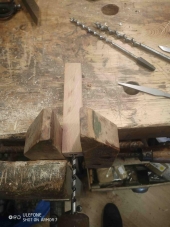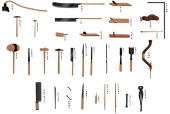Brian Ham wrote:Would I have better luck working on green wood, vs seasoned, vs weathered/kiln-dried?
Yes...almost always. This is why we work in green (wet wood) almost exclusively in timber framing. We even will soak a dryer piece of wood that we are starting to work with oil (sometimes water) and dip our chisels in chameli, or olive oil (non drying oils) to facilitate cutting.
Woodworking in general has many...let us say...strong cultures with opinions...about it. This seems to be especially true in the last 40 years, where very distinct camps have formed on everything from "how to sharpen" to "kiln dried vs air dried vs green woodworking."
I love what you are trying to do but just going out and doing it!

Perhaps look into some of the green woodworking books and traditional methods of woodworking. This may be something that is of interest. Keep us all posted here of your progress, thoughts, and questions.
Regards,
j








